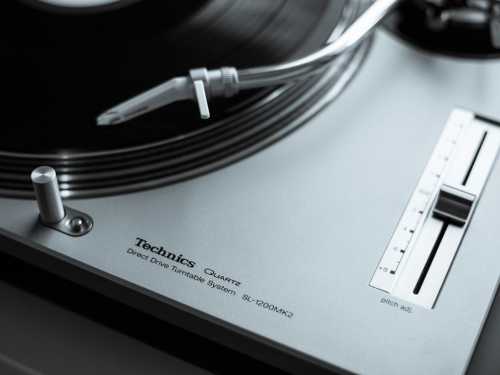
Let's find out how this brand has gone through a difficult path: from impressive flourishing to unexpected decline and subsequent sharp revival.
How the Technics brand came about
The history of Technics begins long before the appearance of the brand itself. In 1918, a young Japanese entrepreneur Konosuke Matsushita founded Matsushita Electric, which would later grow into the world-famous Panasonic corporation. Initially, the company's products were produced for the Japanese market under the National brand, and it was this brand that gained popularity in its homeland. Matsushita's unusual approach to business, based on caring for employees, laid the foundation for the future empire. This principle even saved his life: when in 1946 the occupation authorities wanted to arrest Matsushita as an industrialist working for the war machine, 15,000 workers and their families came to his defense.
After the war, Matsushita decided to focus on peaceful products. A trip to the United States in 1951 opened his eyes to new export opportunities: the American market was hungry for high-quality household appliances. However, there was a problem: the National brand, under which the company worked in Japan, had already been registered in America by another company. Thus, the name Panasonic was born specifically for the international market, which later became synonymous with Japanese quality and the main name of the entire corporation.
By 1965, the world had changed. The Beatles were releasing “Rubber Soul,” the Rolling Stones were preparing “Aftermath,” and the Beach Boys were working on the revolutionary “Pet Sounds.” Music demanded a new quality of sound, and Matsushita Electric understood this perfectly. Japan, having just held the first Olympics in Asia, was ready to show the world its technological capabilities. It was at this moment that a young engineer, Shinichi Ishii, a graduate of Tohoku University, was working in the company's laboratories. His graduation project – an innovative tweeter – was the first step towards creating a new brand that would change the world of audio technology forever.
They say that the birth of a legend began with an unusual decision. When a team of engineers was looking for a name for a new brand, they simply opened a Japanese-English dictionary, looking for the word “technology” in the plural. Not finding the exact version, they settled on “Technics” and added the number “1” – this is how the name of the first speakers Technics 1 appeared.
These compact bookshelf speakers with a power of only 12 watts caused a real sensation – they sounded like full-size speakers. The success of the first product inspired the team. In 1966, the Technics 100P vinyl player appeared with a revolutionary design and tangential tonearm, and by the New Year holidays – the first 10A and 20A amplifiers with a revolutionary design.
Key Technics developments
But the real revolution was yet to come. A devastating article appeared in the leading Japanese audio magazine Stereo Sound. Its author, engineer and critic Fuyuki Siwa, harshly criticized the first transistor amplifier Technics: “The sound is so rough and uncouth, it’s like a wire brush scraping my ears.” Rather than resent the criticism of its amplifiers, Technics invited Siwa to work.
Siva's first major work was the 30A preamplifier, released in 1968, which achieved record-breaking signal-to-noise ratios and the lowest THD on the market. He later created the 50A solid-state amplifier, which delivered 30 watts into 8 ohms from 5 to 200,000 Hz and proved that solid-state amplifiers could provide the same smooth, natural sound as tube amplifiers.
The revolutionary breakthrough was the Direct Drive technology developed by a young engineer, Sweety Abata. In June 1969, during a radio interview where he was invited to discuss the successful 50A amplifier, instead of talking about the amplifier, he took out a prototype of a direct drive turntable right in the studio. Ishii understood perfectly well that radio stations were most interested in reliable, maintenance-free turntables. The live demonstration caused an enthusiastic reaction from the studio staff. A year later, the serial SP-10 turntable was released, which was immediately ordered by the world's largest broadcasters – the BBC, NHK and CBS.
In 1972, the more affordable SL-1200 turntable was introduced, becoming an iconic device in the DJ world. The SL-1200 MK2, released in 1978, became the industry standard and was produced with minimal changes until 2010, when it was listed in the Guinness Book of Records.
In the wake of the turntables' success, Technics engineers took to new heights. In the mid-seventies, an unusual scene could be seen in the company's laboratories: engineers would set up real musical instruments and spend hours comparing their sound with what the speakers reproduced. The result of these experiments was the SB-7000 speaker systems – real monsters, each weighing a hundredweight.
The main achievement of the SB-7000 was the phase linearity technology – for the first time it was possible to combine the acoustic radiation centers in a single plane. The sound was so pure that the speakers required special handling – they had to be placed away from the walls. In cramped Japanese apartments this caused some inconvenience, but true connoisseurs did not stop such trifles.
Golden Era (1970s-1980s)
The 1970s and 1980s were a golden period for Technics. At that time, the key principle of the brand's development was formulated: the creation of innovative high-tech premium products with the subsequent introduction of these technologies into mass production. This approach allowed Technics to become a leader in the global Hi-Fi component market by the end of the 1980s.
A particular achievement of this period was the series of amplifiers with arrow indicators. Their design with large VU meters became so recognizable that it became a visual symbol of the era. The pinnacle of this line was the SU-A2/SE-A1 set – so technically perfect that the components for each instance were hand-selected, making each amplifier a benchmark of engineering precision.
By the early 1980s, the brand was at the height of its success. Even with the advent of the digital age, Technics remained ahead, releasing the SL-P10 CD player with a completely proprietary decoding system, while competitors used standard components from Sony and Philips.
And in 1986, the famous SL-P1200 appeared with outstanding characteristics.
However, after the death of Matsushita Electric's founder in 1989, the first signs of future changes began to appear.
A period of decline and slow fading
The 1990s were a turning point for Technics. Matsushita Electric began to incur losses for the first time in its history. The company tried to find new directions for development: it entered the computer market, bought the MCA Inc studio for $ 6.5 billion, and launched the 3DO Interactive Multiplayer game console. However, all these attempts at diversification failed, bringing only losses.
Times were tough for the Technics brand. Sinihiro Ishii was developing a new generation of high-end hi-fi products, but management only approved one project – the latest high-end amplifier with the famous arrow indicators.
The management demanded that Ishii create a new budget equipment for the mass consumer. It was during this period that the production of music centers for the markets began. These systems with large bookshelf speakers and an amplifier gained immense popularity and created a whole generation of brand fans.
However, Shinichiro Ishii still dreamed of a new generation of hi-fi equipment, but was repeatedly denied funding. The legendary brand was forced to save even on Dolby chips for AV receivers. And he resigned.
The situation was worsened by global changes in the audio market. By 1997, the era of traditional home music listening was over. The development of the Internet, the emergence of the compressed MP3 audio format, the release of the iPod in 2001, and the development of streaming services fundamentally changed the culture of music listening.
In 2000, the new CEO of Matsushita Electric Industries, Kunio Nakamura, began a large-scale restructuring. He closed loss-making businesses, changed distribution schemes, and united divisions under the Panasonic brand.
In 2002, the decision was made to gradually phase out the Technics brand from the Hi-Fi market. It was not an immediate disappearance: budget equipment was produced under this brand for some time, and the legendary SL-1200 player remained in production until 2010. However, for the world of high-end sound, this was the end of an era.
The unexpected revival of the Technics brand
However, in 2014, a new chapter in Technics’ history began. Amidst growing nostalgia for classic sound and a sudden resurgence of interest in vinyl records, Panasonic’s management decided to give the legendary brand a second chance. This decision was made possible by Panasonic’s successful diversification of its business, particularly in the battery and business-to-business (B2B) sectors, which provided the company with a stable income.
Technics' new strategy was radically different from its previous one. The company completely abandoned the production of budget equipment, focusing exclusively on the premium segment of hi-fi equipment. The new line of speakers used time-tested dynamics, and Sinihiro Ishii himself participated in the development of the software. The company also introduced new vinyl players, wireless and wired headphones, and other equipment.
At the same time, the company has retained recognizable brand features, including the famous arrow indicators, while adapting its products to modern requirements. The revived Technics has managed to find a balance between classic technologies and modern solutions, which has allowed it to attract both long-time fans of the brand and a new generation of audiophiles.
In today's environment, the revival of the brand did not require such large-scale investments as in the past, which allowed us to focus on product quality and innovation, without worrying about mass production. This decision turned out to be successful: the products of the updated Technics receive high marks in professional publications and are in constant demand among connoisseurs of high-quality sound.






